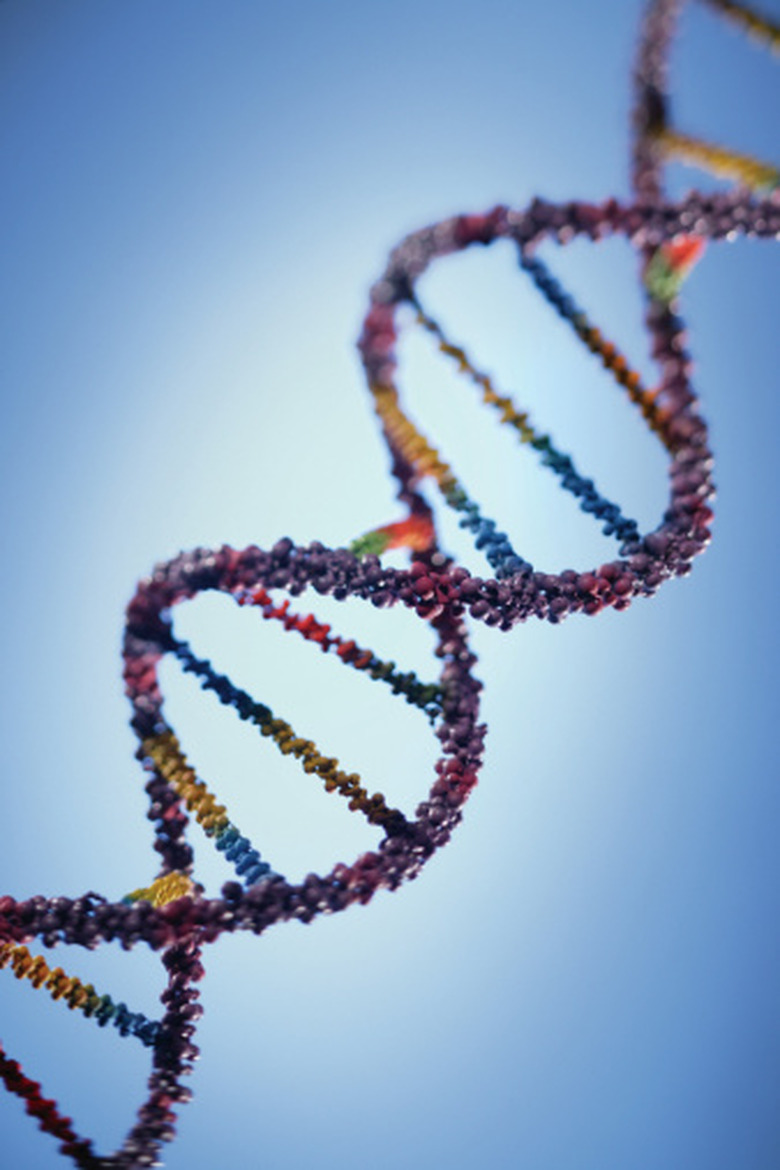What Are The Processes By Which Macromolecules Are Formed?
Macromolecules exist in all living cells and play significant roles determined by their structural arrangement. Macromolecules, or polymers, are formed by the combination of smaller molecules or monomers in a specific sequence. This is an energy requiring process called polymerization that produces water as a byproduct. Each process differs according to the type of macromolecule being formed. Examples of macromolecules include nucleic acids, lipids, proteins and carbohydrates.
Proteins
Proteins
Proteins form when monomers called amino acids combine. Amino acids contain a carboxylic and an amino group on either end of the molecule. The carboxylic group of one amino acid combines with the amino group of another, forming a peptide bond. Several amino acids join together to form polypeptide chains, which are then folded together for the final protein macromolecule. Proteins have countless cellular functions, depending on their shape.
Nucleic Acids
Nucleic Acids
The two types of nucleic acids, DNA and RNA, make up the genetic material of a cell. The nucleic acid monomer is called a nucleotide, and contains a pentose sugar, a nitrogenous base and a phosphate group. Nucleotides bind via covalent bonds as the phosphate group of one joins with the hydroxyl group of another to form polynucleotides. In DNA, two polynucleotides combine via hydrogen bonds at the nitrogenous bases to form a DNA double helix.
Carbohydrates
Carbohydrates
Depending on the length of the polymer, carbohydrates are classified as monosaccharides, disaccharides or polysaccharides. A monosaccharide is a single monomer and includes simple sugars such as glucose. Monosaccharides are joined together via a covalent bond called a glycosidic linkage. Disaccharides such as sucrose are simply two monosaccharides. Carbohydrates function according to the type of sugars they contain and the positions of the glycosidic link.
Lipids
Lipids
Lipids are the only macromolecule that does not undergo polymerization. The base compound for all lipids is the three-carbon alcohol glycerol. Lipids are categorized as fats, steroids and phospholipids. Fats are formed by the addition of three fatty acids to glycerol via an ester bond, which occurs from joining a hydroxyl group to a carboxyl group. In phospholipids a fatty acid is replaced by a phosphate group. Steroids such as cholesterol contain a four-carbon ring skeleton.
Cite This Article
MLA
Audain, Keiron. "What Are The Processes By Which Macromolecules Are Formed?" sciencing.com, https://www.sciencing.com/processes-macromolecules-formed-8684064/. 24 April 2017.
APA
Audain, Keiron. (2017, April 24). What Are The Processes By Which Macromolecules Are Formed?. sciencing.com. Retrieved from https://www.sciencing.com/processes-macromolecules-formed-8684064/
Chicago
Audain, Keiron. What Are The Processes By Which Macromolecules Are Formed? last modified March 24, 2022. https://www.sciencing.com/processes-macromolecules-formed-8684064/
